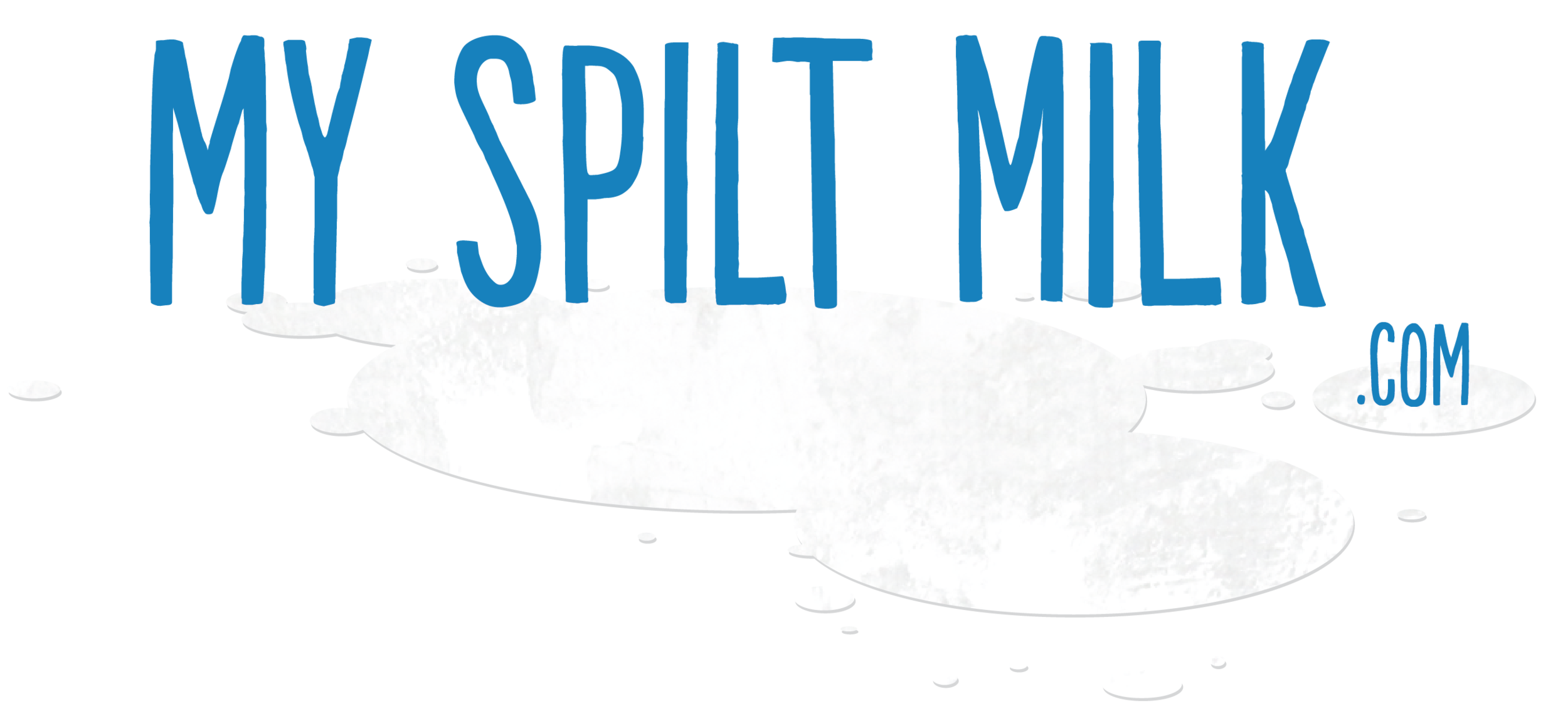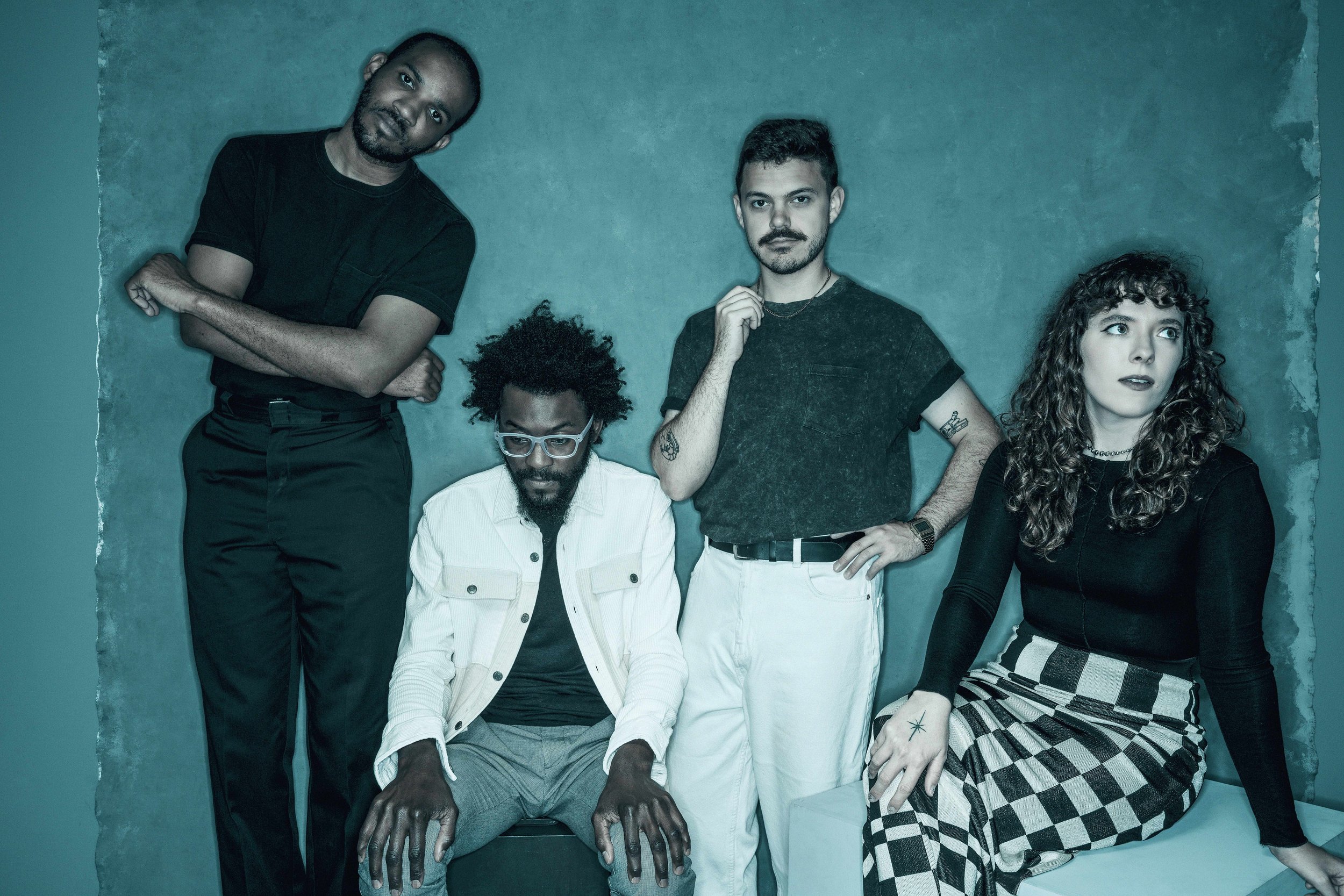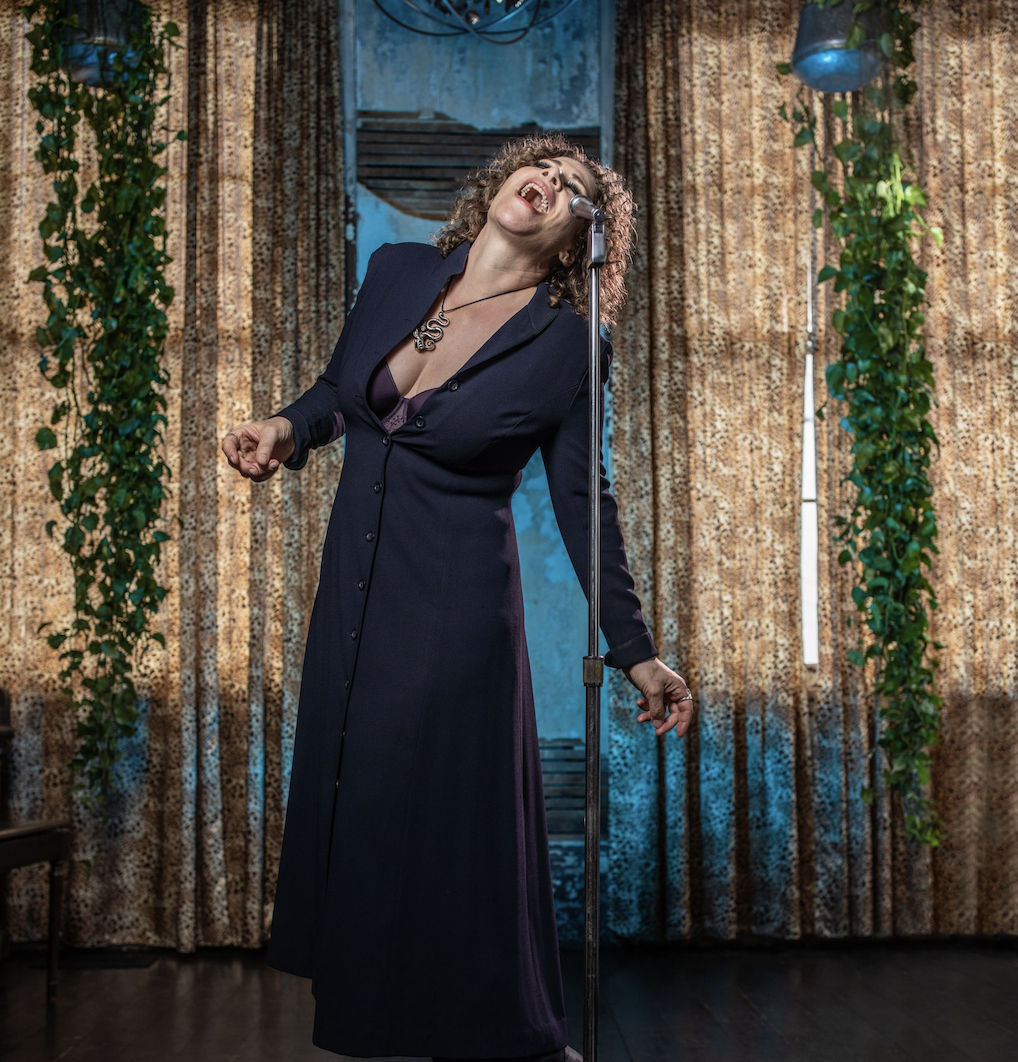Charlie and the Tropicales Visit Trinidad and Jamaica before Jazz Fest in their "Milky Way"

Charlie and the Tropicales, with Charlie Halloran (center)
Every year during Jazz Fest, My Spilt Milk asks musicians to identify their Milky Way–the eight songs that chart their musical universe. I give them nine if Pluto were still a planet, and trombone player Charlie Halloran took the opportunity to submit a Pluto, just in case.
Halloran is a fixture in bands playing traditional jazz and the music that followed it. At Jazz Fest, he’ll perform on Thursday, April 24 at 12:30 p.m. in the Economy Hall Tent, and on Sunday, April 27 at 1:50 p.m. at the Lagniappe Stage with Charlie and the Tropicales with Mireya Ramos.
I asked Halloran to contribute with Charlie and the Tropicales, his calypso band, in mind. The band’s repertoire reaches beyond just calypso to music from the Caribbean, but calypso gave the band a starting point, and it’s a body of music for which a lot of us–me included–could use a guide.
Halloran is a very good guide. For more with Charlie, check our conversation last fall when he appeared on our “Twelve Songs of Christmas” podcast to talk specifically about their Christmas album, Presents for Everyone, but also his journey from St. Louis to New Orleans and into the world of traditional jazz music.
[Charlie Halloran takes it from here.] The Tropicales are modeled after an incredibly niche (at least in the US) group of bandleaders from Trinidad and Jamaica from the 1950s and 1960s, while asking the musical question, “What if Dave Bartholomew’s band lived in Port of Spain?”
The Johnny Gomez Orchestra, the Cyril Diaz Orchestra, Fitz Vaughan Bryan, and Pal Joey Lewis were all groups from Trinidad performing for dances, hotel bars, nightclubs, visiting cruise ships, as well as supporting calypso singers and touring regionally with bandleaders like Mighty Sparrow and Lord Melody. Similarly, Byron Lee and the Dragonaires and the Skatalites existed as house bands in Jamaican recording studios, but maintained steady work for dances, private parties, and singing competitions. Think Deacon John or the Meters, but in the Kingston, not Freret Street.
What I particularly like about the bands from Trinidad is the breadth of styles they incorporate. Of course they primarily play calypso, the beautiful native music to Trinidad, but you also hear biguines from Guadeloupe and Martinique, joropo and waltzes from Venezuela (closer to Trinidad than MSY is to the French Quarter). You hear cha cha, mambo, merengue from Cuba and the Dominican Republic. Also simply straight ahead, swinging jazz. Into the ‘60s, boogooloo and rock and roll.
Similarly, the bands from Jamaica are clearly pulling from New Orleans music of the 1950s and ‘60s–Fats Domino, Huey “Piano” Smith, Lee Dorsey, Shirley and Lee, Chris Kenner.
The video of Bunny Striker Lee that recently went viral on Instagram features him talking about New Orleans’ heavy influence on Jamaican music, which confirms what Jon Cleary has been saying for decades. While New Orleans music clearly has lots of Caribbean influence, not enough is said about New Orleans influence on Caribbean music. So with that in mind, and only valid for today, April 15th 2025, here are eight musical planets floating in the Tropicales’ Milky Way.
“Train Calypso” - Johnny Gomez Orchestra
The Tropicales’ primary influence is the Johnny Gomez Orchestra. We must play seven or eight of their numbers. It has been about 10 years since I came across this recording from a live performance at the Hotel Normandie in 1956 Port of Spain and the song has been in the book since our first gig. I even brought this song to traditional jazz gigs before the Tropicales were formed - it’s just so fun. Two percussionists going nuts the whole time, group vocal, the din of the audience in the background, two tenor saxophones ala every New Orleans band of the 1950s, growling trumpet that sounds like Dave Bartholomew, a clarinet solo, the form of the song gets messed up - it’s clearly a band feeling things out, off the sheet music, but they’re so good. I can easily imagine these sounds at the Dew Drop Inn in 1957 if they had a Mai Tai night.
“Eastern Standard Time” - The Skatalites https://www.youtube.com/watch?v=ANpdZkKJCUM
My earliest influences on the trombone were Big Jim Robinson and Trummy Young who my dad loved with Preservation Hall and Louis Armstrong, and Rico Rodriguez and Don Drummond who my older brothers loved with the Specials and the Skatalites. I distinctly remember a week in 7th or 8th grade learning Jim Robinson’s solo on “Ice Cream” and Rico Rodriguez’ solo on “Message to You Rudy.”
A memory from college also sticks out when I was having a hard time understanding more modern jazz harmony and telling a friend, ‘I don’t want to play jazz. I want to play ska or with the Preservation Hall Band.’ Well here we are! This is the first Skatalites song I fell in love with, and what particularly stands out to me with all of Don Drummond’s music is how he can take a simple melody, but the harmonies are always so sad. It’s buried in the mix, but something about the horns behind the trombone melody makes this incredibly simple song so, so mournful. It’s that Charlie Brown, Wes Anderson, good kind of sad. Then the amount of space in the trombone solo. Just wow.
“Jean and Dinah” - Mighty Sparrow
Mighty Sparrow is the first calypso singer I fell in love with, especially this era from the mid to late 1950s. I had a compilation of a lot of his early singles but hadn’t paid super close attention to the lyrics. One night around 2016 at Mimi’s Alligator Chomp Chomp, I met a Shell worker in town from Trinidad who explained to me the role of the US Army base in Trinidad, the singing competitions during carnival, and how this song really catapulted Mighty Sparrow to his title of Calypso King of the World. While it would be inappropriate for us to sing this song, we’ll occasionally play this number as an instrumental. The ascending chords underneath the verses, the wild bongos, Sparrow’s beautiful vocal–I dare you not to like this song.
“Taboo” - Cyril Diaz https://www.youtube.com/watch?v=CJqlJTEt45w
Another live recording from 1950s Trinidad, this time the Cyril Diaz Orchestra. Once again, the wild percussion high in the mix, muted trumpet that sounds like Dave Bartholomew, a sax section, gang vocal, electric guitar and piano. This song may be from 1920s Cuba, but it was definitely covered in 1960s Jamaica. There are a handful of bands in New Orleans playing this number, the Tropicales’ included. I love the looseness of the arrangement, and I can easily picture these sounds in 1950s New Orleans. Hello Marie Leveaux?
“Storm Warning” - Dr. John
While the Tropicales are a horn-based band, I’ve always wanted electric guitar to be featured prominently. Our first record has both Joshua Starkman and John Maestas on guitar. Nahum Zdybel has been holding down the guitar chair since COVID, with my only instruction being to use all the effects. I’ve always loved the sound of Peter Tosh’s guitar–crank the delay, reverb, chorus.
Of course, sometimes we go for the clean guitar sound of these 1950s bands, but even the Lord Melody records of the 1950s are dripping with guitar reverb and distortion. The bari sax really brings this song home. Let’s go low end!
One chord song. This is not fundamentally different from the above “Taboo” in any way.
“High Blood Pressure” - Prince Buster https://www.youtube.com/watch?v=X_H-dmPhBM8
Here is a prime example of New Orleans’ influence on the music of Jamaica. I believe I first heard this version of Huey “Piano” Smith and the Clown’s “High Blood Pressure” on WWOZ’s “Rare on the Air” show. A quick trip to Domino Sound and this was added to my collection immediately. While of course the ska and rocksteady artists are pulling from calypso and mento music, New Orleans’ R&B is one of the key ingredients in Jamaican music. We’ve added this song to our set list to complete the circle. A New Orleans band influenced by a Jamaican band influenced by a New Orleans band who was probably influenced by Caribbean bands, and this continues back for a few hundred years.
“Rudies All Around” - Hepcat https://www.youtube.com/watch?v=Z1pRq_gt-eY
During the ska explosion of the 1990s, Hepcat always stood tallest for me. Leaning into the vocal harmonies of the early Wailers (backed by the Skatalites) and the Blues Busters (backed by Byron Lee & the Dragonaires), this L.A. band absolutely nails the rocksteady sound of late 1960s Jamaica. I saw the band four or five times growing up and even tracked a song for one of their singers to record with the Tropicales before his untimely passing in 2024.
Sure they have a horn section, but it’s the vocals and the dancing that sets Hepcat above and beyond their contemporaries (save maybe the Slackers, Chris Murray, Steady 45s, & the Aggrolites). Here in”Rudies All Around” they reference countless older calypsos and mentos, including “Rum and Coca Cola,” “Banana Boat Song,” and “Underneath the Mango Tree.”
“Ba Yo Milatresse La” - Robert Mavounzy et son Orchestre
Before I fell in love with calypso and the dance orchestras of Trinidad, I was enamored with the biguine music of Martinique and Guadeloupe. Usually led by clarinet and trombone, without trumpet, this music features some of the wildest, syncopated, idiosyncratic trombone playing I’ve ever heard. The Tropicales used to lean on this sound more when Tomas Majcherski was in the band as he is an expert in this style of clarinet. The wildness of the horns, ragging very much in a New Orleans style, against the tight vocal harmonies in Creole, with lots of room sound and echo on the recording–it’s simply beautiful music, very much connected to New Orleans jazz. Both danceable and elegant and exciting. Don’t sleep on the music of Martinique and Guadeloupe!
VIDEO
I notice looking over these songs and particularly their grooves is the bass is typically in 2/4 or 4/4 with the syncopation coming from the percussion and horns. This is not the music of Cuba or other Latin American countries with heavy syncopation in the bass, hiding and obscuring the beats.
While that is beautiful music and certainly inspires our melodies and improvisation, the Tropicales are more connected to the music of Jamaica, New Orleans and Trinidad, driven by catchy melodies and fun, albeit straight forward, rhythms.
… and in case Pluto is re-recognized between now and Jazz Fest, I have a ninth:
“Mama Look at Boo Boo” - Lord Melody
The chorus singing behind the vocal, the crowd having so much fun, the thumping bass, the unmistakable voice of Lord Melody, up into falsetto. Dare I say I might like him more than Mighty Sparrow? Just beautiful.
Creator of My Spilt Milk and its spin-off Christmas music website and podcast, TwelveSongsOfChristmas.com.






